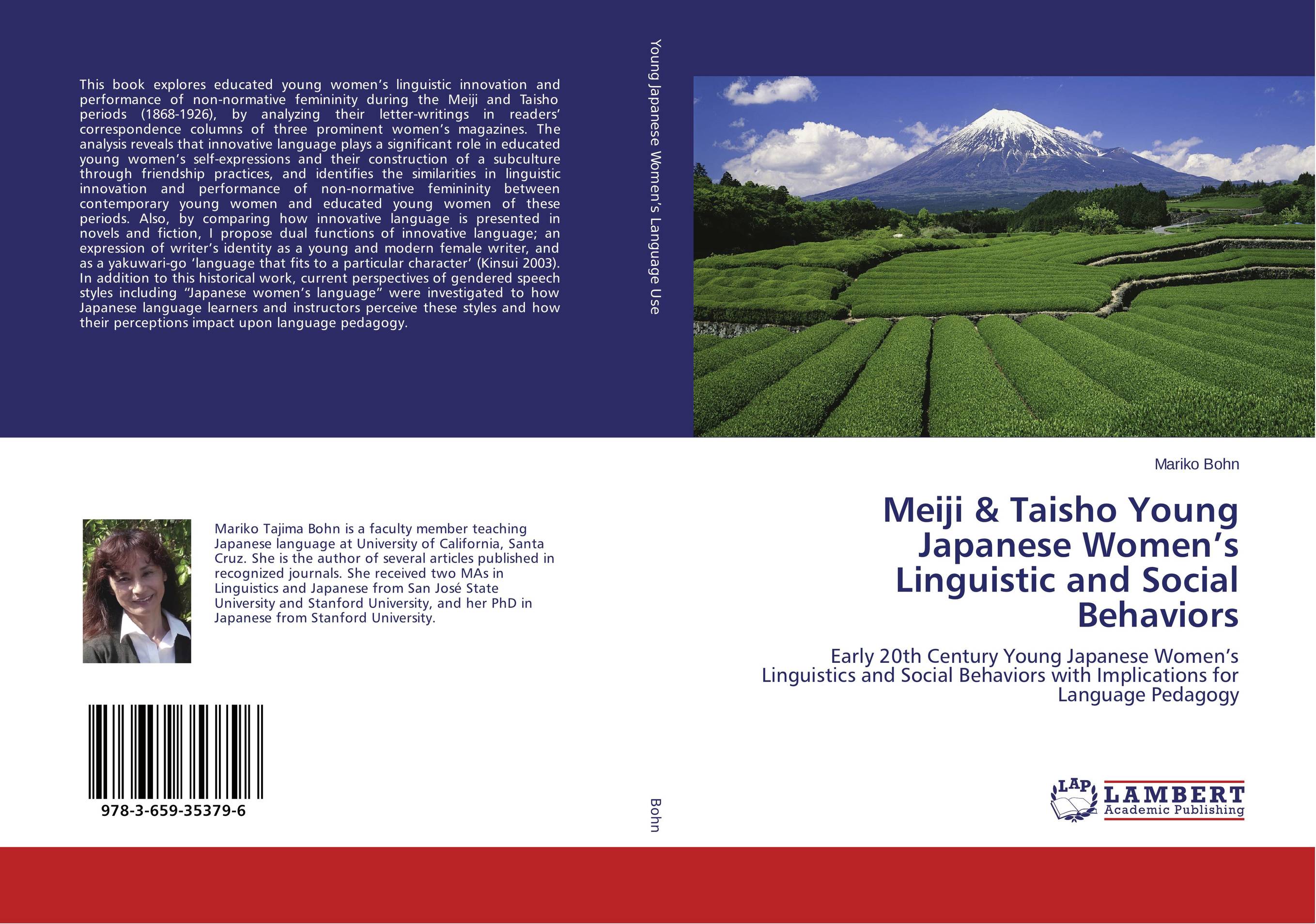| Поиск по каталогу |
|
(строгое соответствие)
|
- Профессиональная
- Научно-популярная
- Художественная
- Публицистика
- Детская
- Искусство
- Хобби, семья, дом
- Спорт
- Путеводители
- Блокноты, тетради, открытки
Meiji & Taisho Young Japanese Women’s Linguistic and Social Behaviors. Early 20th Century Young Japanese Women’s Linguistics and Social Behaviors with Implications for Language Pedagogy

В наличии
| Местонахождение: Алматы | Состояние экземпляра: новый |

Бумажная
версия
версия
Автор: Mariko Bohn
ISBN: 9783659353796
Год издания: 2015
Формат книги: 60×90/16 (145×215 мм)
Количество страниц: 296
Издательство: LAP LAMBERT Academic Publishing
Цена: 35948 тг
Положить в корзину
| Способы доставки в город Алматы * комплектация (срок до отгрузки) не более 2 рабочих дней |
| Самовывоз из города Алматы (пункты самовывоза партнёра CDEK) |
| Курьерская доставка CDEK из города Москва |
| Доставка Почтой России из города Москва |
Аннотация: This book explores educated young women’s linguistic innovation and performance of non-normative femininity during the Meiji and Taisho periods (1868-1926), by analyzing their letter-writings in readers’ correspondence columns of three prominent women’s magazines. The analysis reveals that innovative language plays a significant role in educated young women’s self-expressions and their construction of a subculture through friendship practices, and identifies the similarities in linguistic innovation and performance of non-normative femininity between contemporary young women and educated young women of these periods. Also, by comparing how innovative language is presented in novels and fiction, I propose dual functions of innovative language; an expression of writer’s identity as a young and modern female writer, and as a yakuwari-go ‘language that fits to a particular character’ (Kinsui 2003). In addition to this historical work, current perspectives of gendered speech styles including “Japanese women’s language” were investigated to how Japanese language learners and instructors perceive these styles and how their perceptions impact upon language pedagogy.
Ключевые слова: Language and Gender, Japanese Women’s Language, Linguistic Norms, Language Ideology, Japanese Language Pedagogy



